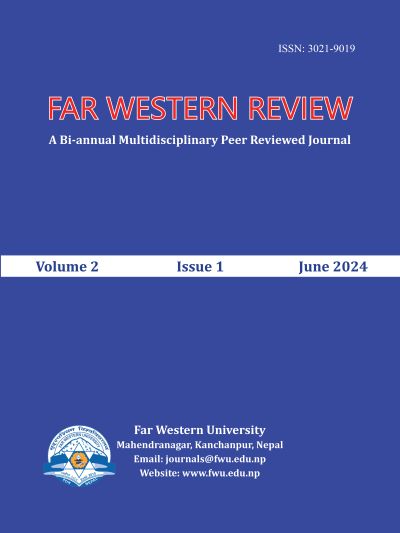Computational Methods of Ruin Probability: Actuarial Comparison of De-Vylder and Tijim’s Models
DOI:
https://doi.org/10.3126/fwr.v2i1.70533Keywords:
Adjustment coefficient, minimum capital, ruin probability, surplus process, underwriting operationAbstract
The underwriting operation of insurance firms is to assume the risk of the insured in return of premium received. In order to shield itself against extreme losses and avoid the risk of insolvency, it becomes necessary to examine how the portfolio is expected to perform over a long-time horizon. The surplus process is connected with the excess of the premium received over claims outgo of the insurer’s portfolio to enable it predict the level at which the insurer could survive. When the surplus approaches a defined lower limit irrespective of the initial reserve, then the insurer is ruined. The probability of ruin apparently defines the volatility embedded in underwriting process as a useful tool of risk measurement in long range planning of premium rate. This paper is anchored on the following objectives: solve the adjustment co-efficient using the moment generating function, compute the De-Vylder’s ruin, compute the Tijim’s ruin approximation and then compare the two. Although it was verified that as the initial capital increases, the probability of ruin decreases under the two models, computational evidence from our results in tables 2 and 3 shows that the Tijim’s approximation to ruin probability is higher than the De-Vylder’s approximation at the same level of initial capital and safety loading. The implication is that the De-Vylder’s approximation to ruin probabilities is an improvement over Tijim’s ruin model and hence De-Vylder’s approximation is recommended for the insurer’s ruin assessment
Downloads
Downloads
Published
How to Cite
Issue
Section
License

This work is licensed under a Creative Commons Attribution-NonCommercial 4.0 International License.
CC BY-NC: This license allows reusers to distribute, remix, adapt, and build upon the material in any medium or format for noncommercial purposes only, and only so long as attribution is given to the creator.




